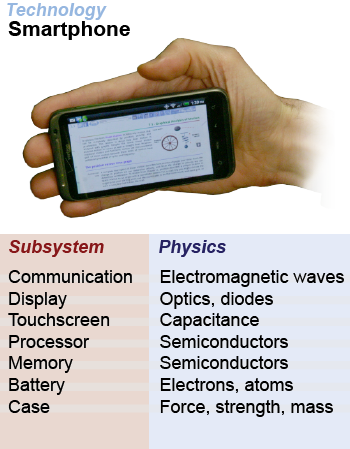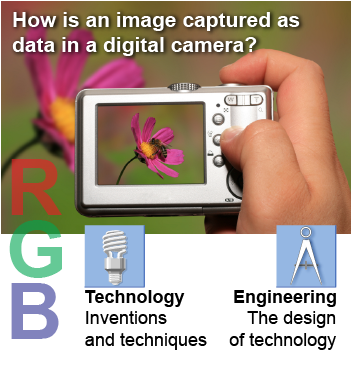|
Technology is everything in the built, or human-constructed, world. Every device, invention, material, or process created by human minds is technology, from a shovel to the space shuttle, and from hieroglyphics on a papyrus scroll to the Internet. In this course we will examine the fundamental physics behind many interesting technologies. 
| 
|
One book can hardly scratch the surface of the diversity of technologies created by human inventiveness. Instead, our goal is to show how fundamental concepts, such as electricity or waves, are employed in different technologies. We need creative new ideas to solve some of humanity’s challenges—crises in medical care, food production, transportation, environmental degradation, and renewable energy. 
|
All technologies obey all the laws of physics, with no exceptions. A clever approach, however, may lead to technologies that seem impossible. For example, the laws of physics state that thermal energy flows from hot to cold, or from higher to lower temperature. A refrigerator is a technology that makes heat flow from cold to hot! Warm food freezes because heat flows out of the food and into the warmer room, which is at a higher temperature. The secret of refrigeration (and air conditioning) is revealed on page 745. No laws of physics are violated but some very clever inventing has been done. 
|
 The technology and engineering icons in every chapter of the e-Book provide you with a quick way to see how physics concepts in the chapter are applied in various technologies. For example, digital imaging is a technology that we have all come to take for granted. Only 20 years ago a photograph was taken with chemical film, which had to be sent out and processed. Often you could not see your pictures for two weeks until the film came back! Today, you press the view button on a digital camera, or your cellphone, and the picture is taken instantly. You can take another if it did not come out right. How does the technology of digital imaging work? How are colors represented with numbers?
The technology and engineering icons in every chapter of the e-Book provide you with a quick way to see how physics concepts in the chapter are applied in various technologies. For example, digital imaging is a technology that we have all come to take for granted. Only 20 years ago a photograph was taken with chemical film, which had to be sent out and processed. Often you could not see your pictures for two weeks until the film came back! Today, you press the view button on a digital camera, or your cellphone, and the picture is taken instantly. You can take another if it did not come out right. How does the technology of digital imaging work? How are colors represented with numbers? 
|
Many technologies make use of several different topics in physics. Which of the following topics does a dam producing hydroelectric power depend upon the most? - forces and motion
- energy and transformations
- waves and sound
- electricity and magnetism
- the atom and quantum physics
- I and III only
- I, II, and IV only
- III and V only
- I, III, and V only
- none of the above
 |
The correct answer is b. A hydroelectric power plant gathers energy from falling water and converts it to electrical energy that can be used by people. 
|
| |
|

